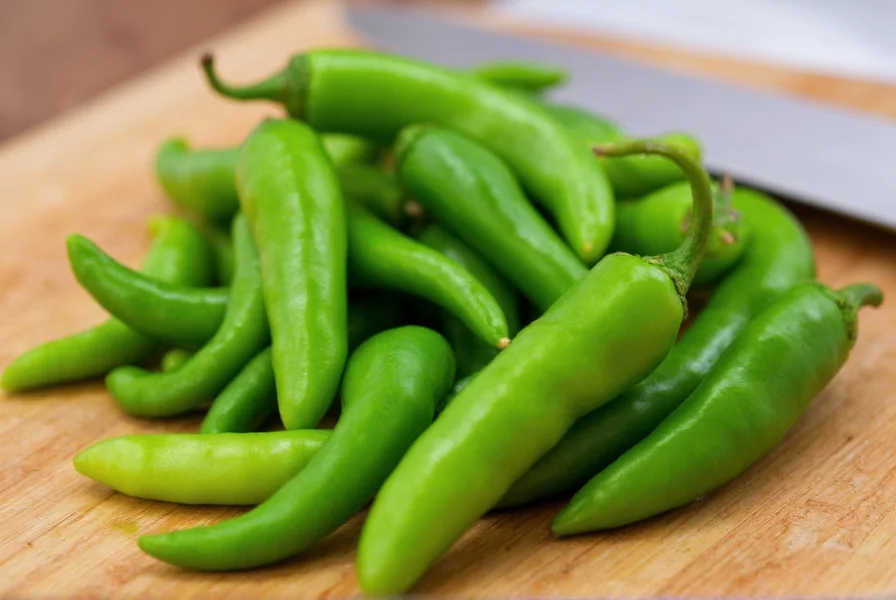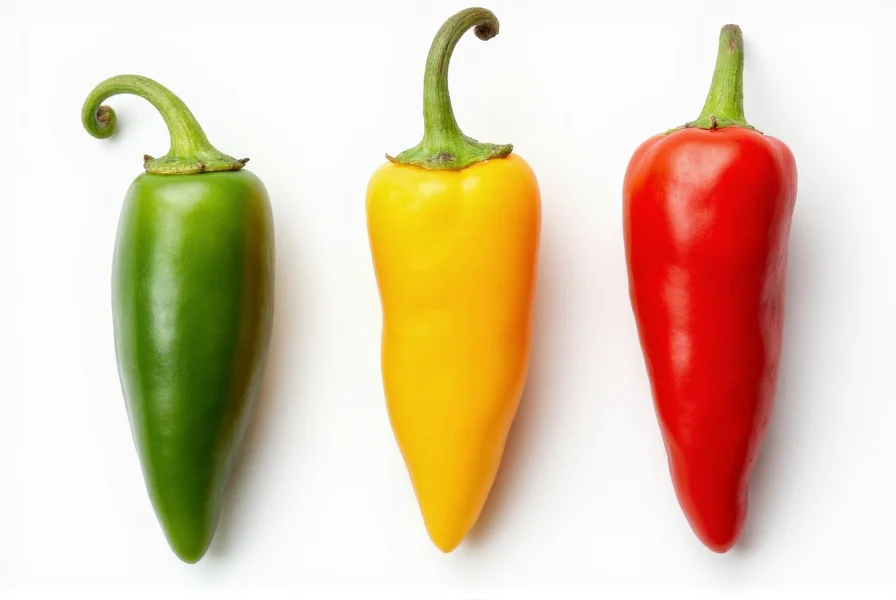The serrano pepper ( Capsicum annuum) delivers a distinctive kick that elevates Mexican and Southwestern cuisine. Originating from the mountainous regions of Puebla and Hidalgo in Mexico, these slender peppers range from 1-4 inches long with smooth, glossy skin that transitions from bright green to vibrant red, orange, or yellow as they mature. Unlike bell peppers that lack capsaicin, serranos contain significant heat concentrated in their white pith and seeds.
Understanding serrano pepper heat levels is crucial for home cooks. On the Scoville scale, they register between 10,000-23,000 units—approximately 2-5 times hotter than jalapeños but milder than habaneros. This medium-high heat profile provides substantial kick without overwhelming other flavors, making serranos versatile for both fresh and cooked applications. The heat intensifies when cooked, so add them late in the cooking process for maximum flavor impact.
| Pepper Variety | Scoville Heat Units | Relative Heat (Jalapeño=1) | Common Culinary Uses |
|---|---|---|---|
| Serrano | 10,000-23,000 | 2-5x | Salsas, guacamole, pickling, garnishes |
| Jalapeño | 2,500-8,000 | 1x | Stuffed peppers, nachos, poppers |
| Habanero | 100,000-350,000 | 20-40x | Hot sauces, Caribbean dishes |
| Cayenne | 30,000-50,000 | 6-10x | Spice blends, Cajun cuisine |
When selecting serrano peppers at your local market, look for firm specimens with unblemished skin. Green serranos offer the classic grassy flavor profile, while riper red, orange, or yellow varieties develop sweeter, fruitier notes. Always wear gloves when handling hot peppers and avoid touching your face—capsaicin oils can cause severe irritation to sensitive areas. Properly stored in a paper bag in the refrigerator's crisper drawer, serranos maintain freshness for 1-2 weeks.
Culinary applications for serrano peppers extend far beyond basic salsas. Professional chefs often incorporate them into crema for tacos, blend them into mole sauces, or infuse them in tequila for cocktails. For home cooks exploring serrano pepper uses in cooking, try adding minced serranos to guacamole for extra dimension or slicing them thinly for pickled pepper toppings. The thin walls make serranos particularly suitable for quick-pickling compared to thicker-walled jalapeños.
Many home cooks wonder about serrano pepper substitutes when these chilies aren't available. The closest alternative is a fresh green jalapeño, though you'll need to increase the quantity by 50% to match the heat level. For recipes requiring cooked serranos, consider using a combination of jalapeño and a pinch of cayenne pepper. Thai bird chilies work as substitutes in Southeast Asian fusion dishes, while pequín peppers offer a traditional Mexican alternative with similar heat characteristics.
Growing serrano peppers successfully requires specific conditions. These plants thrive in warm climates with full sun exposure and well-draining soil. Start seeds indoors 8-10 weeks before the last frost, then transplant outdoors when soil temperatures exceed 60°F (15°C). Serrano plants typically reach 24-36 inches in height and produce abundant fruit within 70-80 days of transplanting. For container gardening, select pots at least 12 inches in diameter with adequate drainage. Consistent watering prevents blossom end rot while encouraging robust fruit development.
Nutritionally, serrano peppers deliver impressive benefits beyond their heat. A single pepper contains more than 100% of your daily vitamin C requirement and significant amounts of vitamin B6, potassium, and antioxidants. The capsaicin responsible for their heat has been studied for potential metabolic benefits and pain relief properties. However, those with sensitive digestive systems should consume serranos in moderation to avoid gastrointestinal discomfort.
When handling serrano peppers, always follow safety protocols. Wear disposable gloves during preparation and wash all surfaces thoroughly afterward. If you experience skin irritation, apply milk or yogurt to neutralize the capsaicin oils. Never use bare hands near your eyes after handling hot peppers—this common mistake causes significant discomfort. For those sensitive to heat, remove the seeds and white membranes where capsaicin concentration is highest.

Understanding serrano pepper characteristics helps home cooks confidently incorporate them into various dishes. Their unique balance of heat and flavor makes them indispensable in authentic Mexican cuisine while offering versatility for creative culinary experimentation. Whether you're making traditional pico de gallo or experimenting with modern fusion dishes, serranos provide that perfect medium-heat foundation that enhances rather than overwhelms other ingredients.

How hot is a serrano pepper compared to a jalapeño?
Serrano peppers are significantly hotter than jalapeños, measuring 10,000-23,000 Scoville Heat Units compared to jalapeños' 2,500-8,000 units. This makes serranos approximately 2-5 times hotter, with more concentrated heat in the seeds and white membranes.
Can I substitute jalapeños for serranos in recipes?
Yes, but you'll need to adjust quantities. Use 1.5 jalapeños for every serrano pepper called for in a recipe to approximate the heat level. Remember that jalapeños have thicker walls and slightly different flavor, so they work best in cooked applications rather than fresh salsas where serranos shine.
How do I reduce the heat of serrano peppers in cooking?
To reduce serrano pepper heat, remove all seeds and white membranes (where capsaicin concentrates), then soak sliced peppers in cold salted water for 15-20 minutes before use. Cooking methods also affect heat—roasting mellows serranos slightly, while raw applications deliver maximum heat.
How long do fresh serrano peppers last in storage?
Properly stored in a paper bag in your refrigerator's crisper drawer, fresh serrano peppers maintain quality for 1-2 weeks. For longer storage, freeze whole peppers for up to 6 months or pickle them for 1-2 months of refrigerator storage. Never store peppers in plastic bags, which trap moisture and accelerate spoilage.











 浙公网安备
33010002000092号
浙公网安备
33010002000092号 浙B2-20120091-4
浙B2-20120091-4